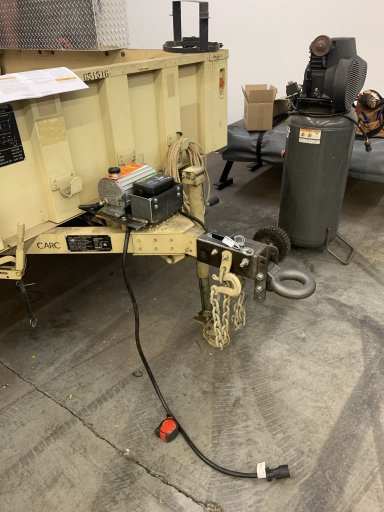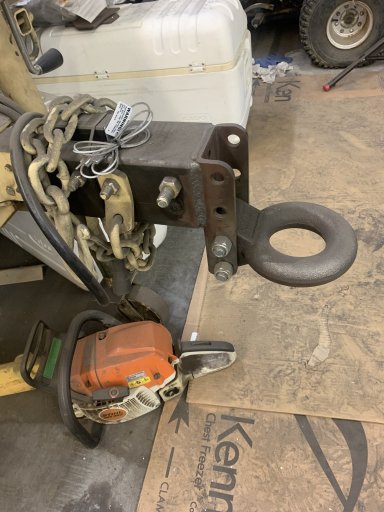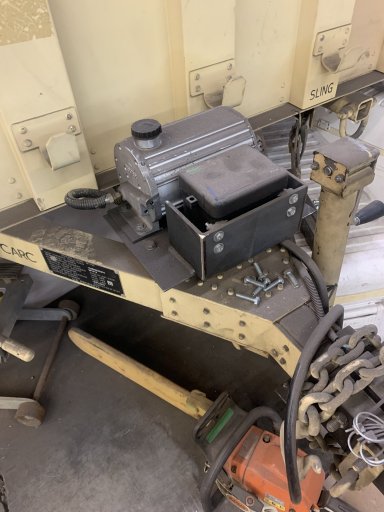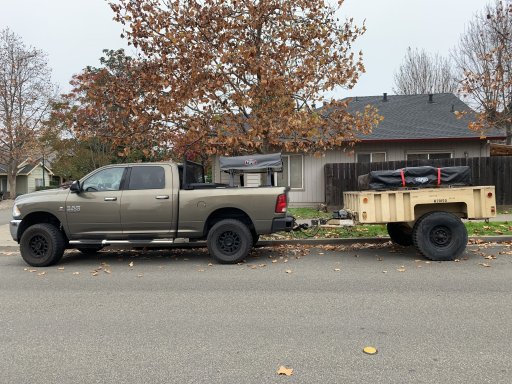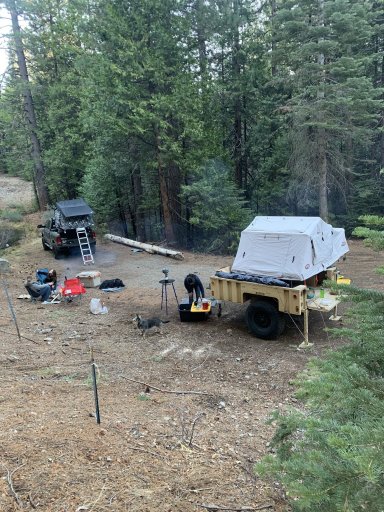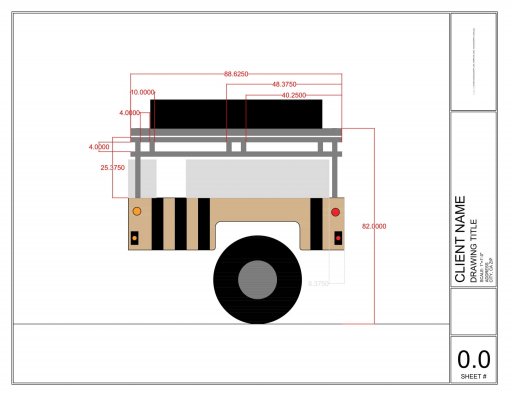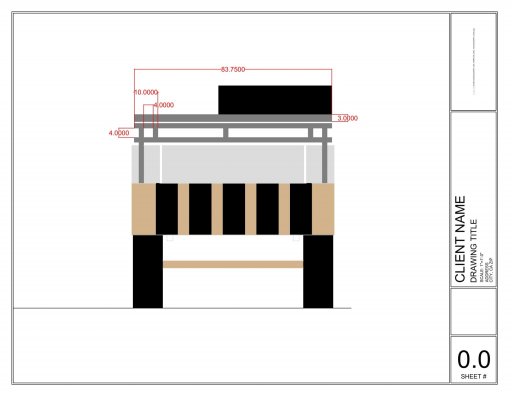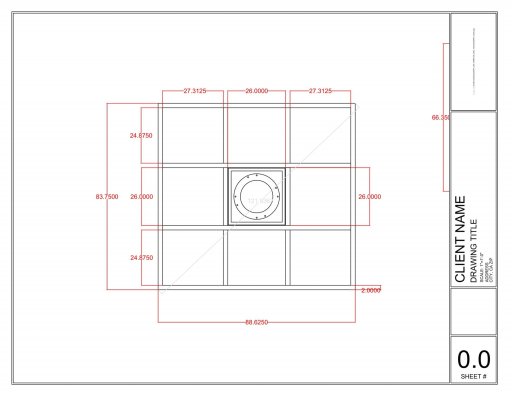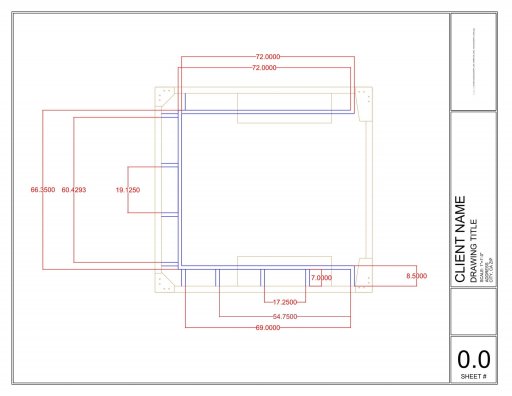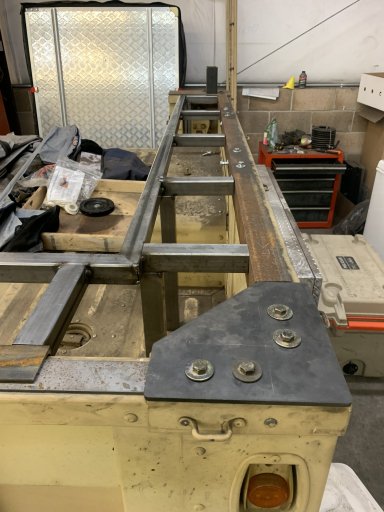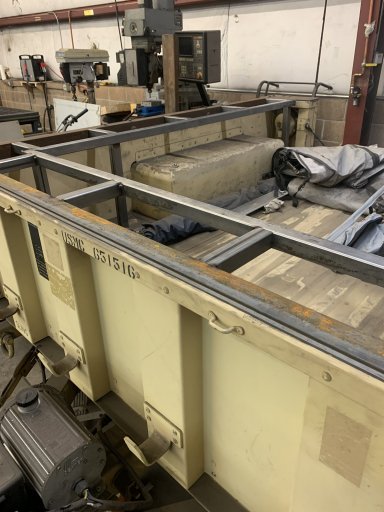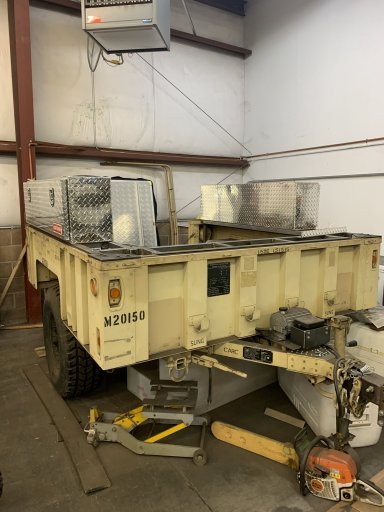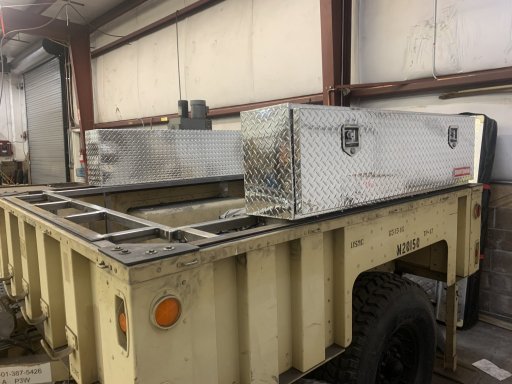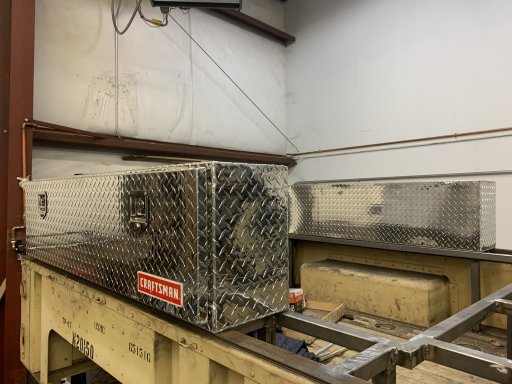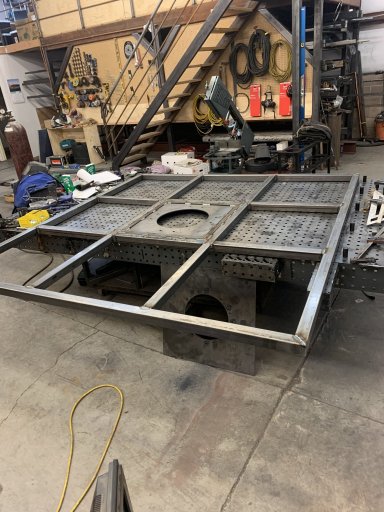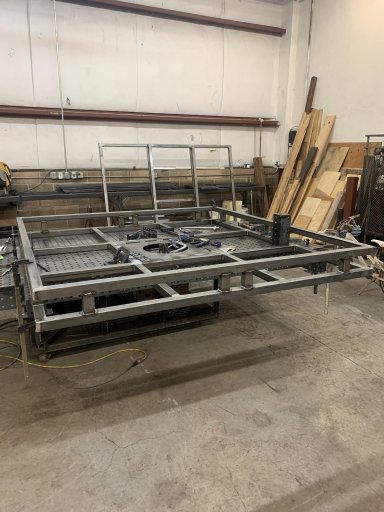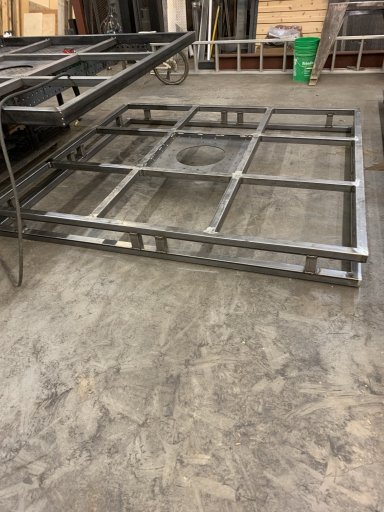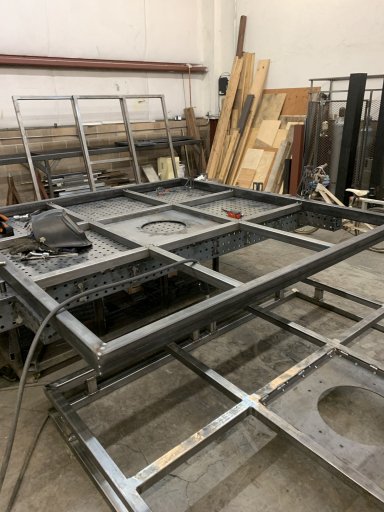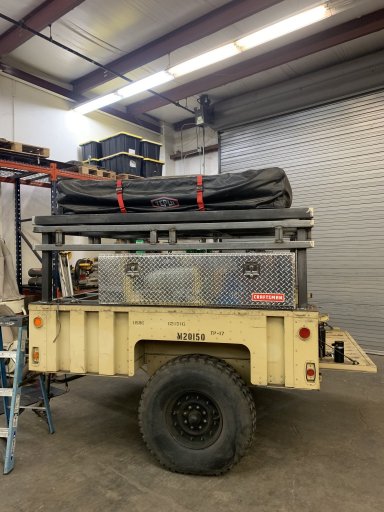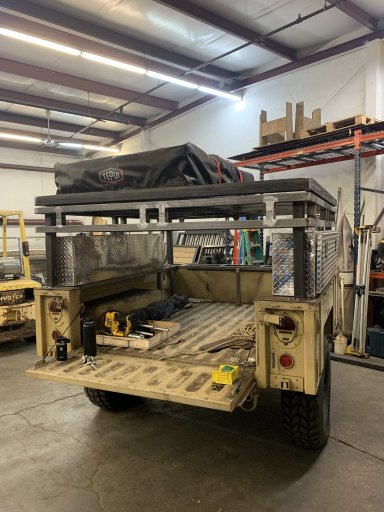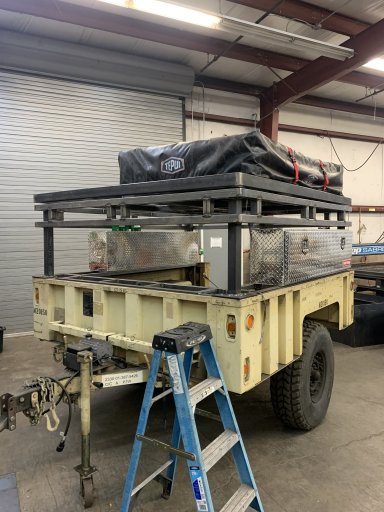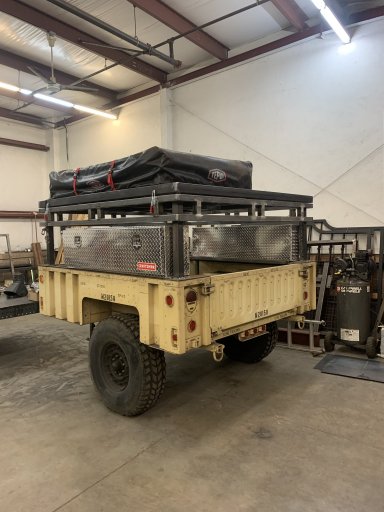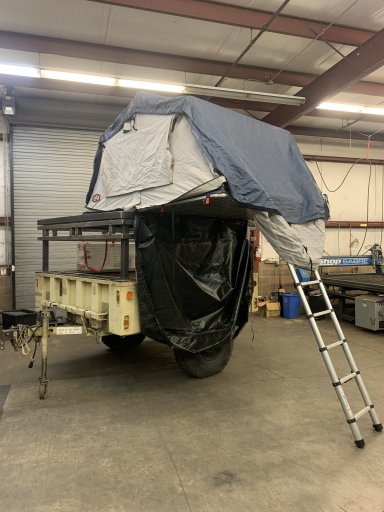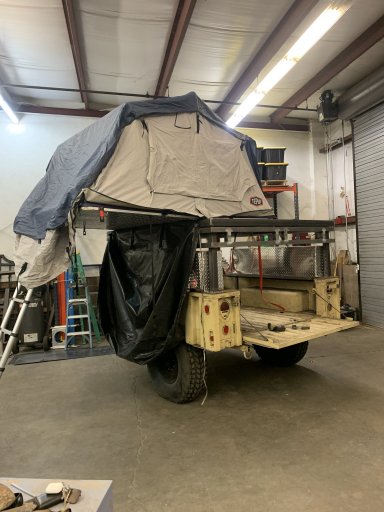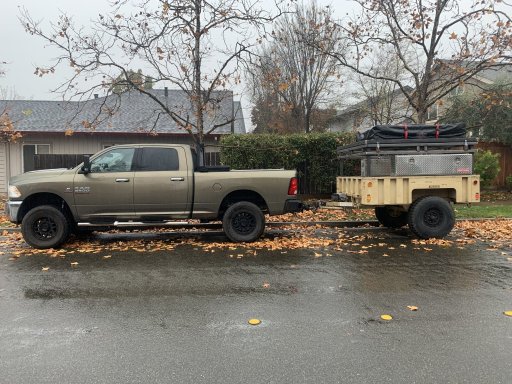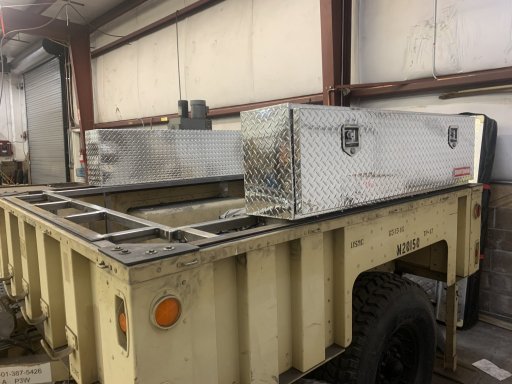Hi all. Well, I'm going to give a build thread the old college try. I've done a couple of different builds (different platforms/categories, etc), but never a build thread on them, so...Here it goes!
The Story
I have always been an outdoors person, having spent a lot of my youth helping on the family cattle ranch, parts of which are completely surrounded by tens of thousands of acres of National Forest. Anything out in nature appealed to me, from backpacking, to snowboarding, camping, hunting, scuba diving, flying, motorcycles, and pretty much everything in between. Motorcycling was always near the top of the list though, and I don't think there has been a single day in the last 25+ years I have not owned at least one.
After watching The Long Way Round and (to a lesser extent) The Long Way Down, I got the bug to get into Adventure Motorcycling/Touring. What better way to get out and experience new and exciting (and sometimes old and familiar) places, than to be on a motorcycle. To be out in the elements, feel the cold, the warm, sun, and the rain. To smell the area you are in, and experience the change from one place to another. It was fascinating, exciting, and liberating.
I had the pleasure to take a couple of trips by myself, and then met a beautiful woman who is intelligent, interesting, and interested (which I find equally important), and who also happens to love the outdoors. She had never been on a motorcycle before we met, but that didn't last very long (our second date was a motorcycle ride out to the coast to watch the sun set). A couple months later and we took a weekend long trip from the San Francisco Bay Area, out to Tahoe, up to the Mt. Lassen area, back out to the west side of the state, and (almost) made it back home without any issues (a flat tire a few hours from home found us on the side of the highway waiting for a ride from family.)
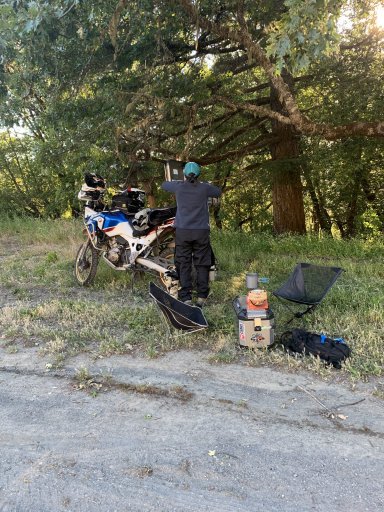
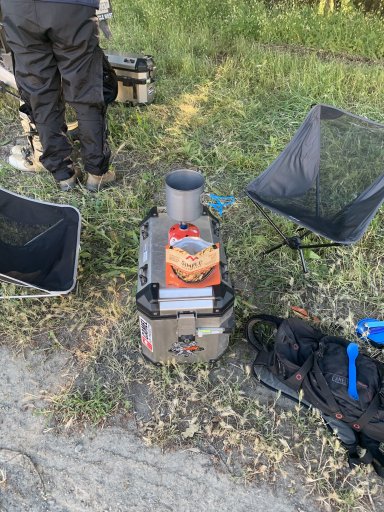
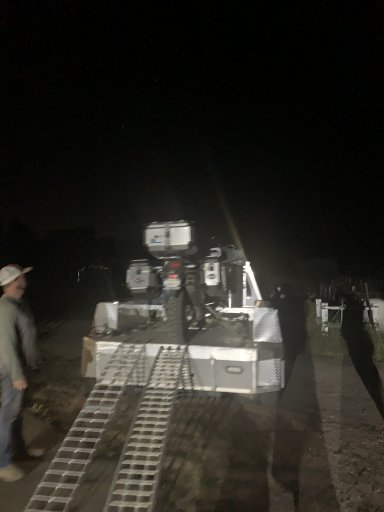
Fast forward a little while and we find ourselves living together and adopting a dog from a couple very good friends who were moving and couldn't take the dog with them (there was never any question where the dog would go if they weren't able to keep him, and it had been discussed long before the situation ever arose.) Well, it's a bit harder to add a 95lb black lab to an already full adventure motorcycle, so it was decided we should get a roof top tent for her Subaru, and I could build a rack for my Ram 2500 that could also carry it.
We took a couple of trips with the tent on my truck and it worked out great (so great we have never used the tent on the Subaru.) A few months later and what happens? We get another dog. Extended motorcycle trips are pretty much out of the questions now (but we can still get away for a good long ride now and then), and with the addition of the 2nd dog, a 45lb husky, we find the truck is packed to the gills with everything we want/need even for a long weekend. We were able to do a 2 week road trip up the eastern side of CA, OR, and WA, over into MT, down through ID, UT and NV (just clipped the corner AZ too), and back over to the family ranch outside of Bakersfield, CA. On this trip, we were cramped, to say the least, and even the dogs were having to share the back seat with supplies/personal items.
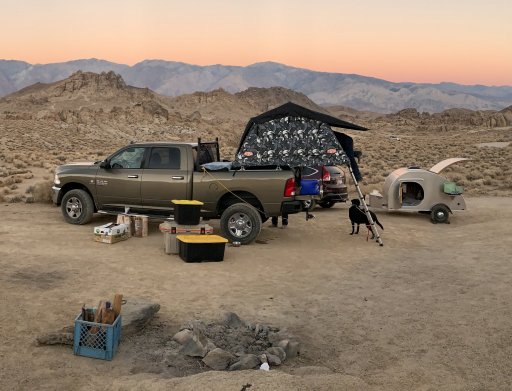
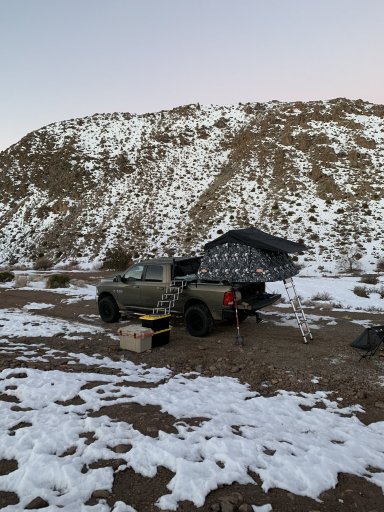
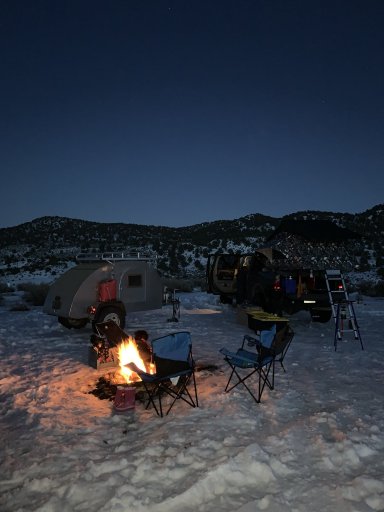
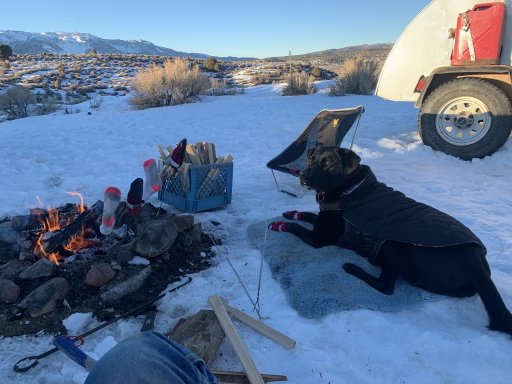
(This is a challenge photo - Find the deployed RTT)
I had seen some videos of people turning the M1101/2 into camping trailers, and thought it could be a fun project (and had been thinking of doing one before the long trip, but not actively trying very hard). Well, the long trip was a bit of a deciding factor, and I resolved to putting more effort into making it a reality. I scoured GovPlanet.com, Expedition.Supply, and any other sites I could find to learn as much as I could about the trailers, buying process, and prices. It just so happened that there was an auction for several M1102s in southern CA right at the end of our trip. I put bids in on the first couple, but they went for well more than I was prepared/willing to spend. Then, on the final one up for auction, I WON! And not at my highest bid either.
Unfortunately, this meant another 2 days in the truck only a week after getting back from being in it, pretty much all day, for the previous 2 weeks. So, on my next "weekend" (I was in Law Enforcement at the time and worked most traditional weekends, which was actually in my benefit at this time) I hooked up our gooseneck trailer, and drove 8 hours to the outskirts of Barstow, CA. The next morning, I drove out to the auction yard and picked up my new (to me) M1102 trailer. It was actually in better shape than I had anticipated, even though I had thoroughly scoured the photos before bidding. Once I was all loaded up and tied down, it was time to get back on the highway for another 8 hours for the drive home.
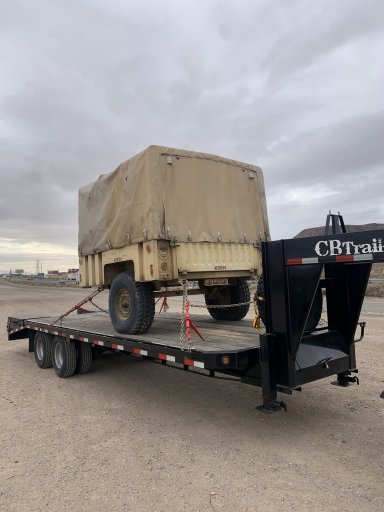
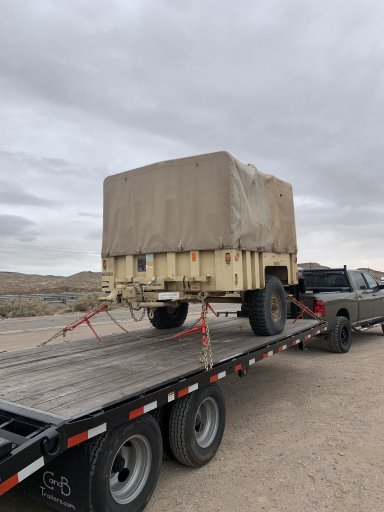
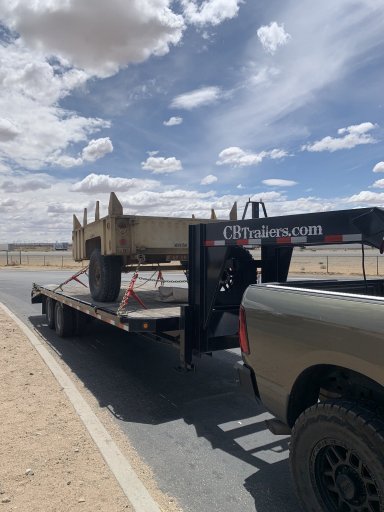
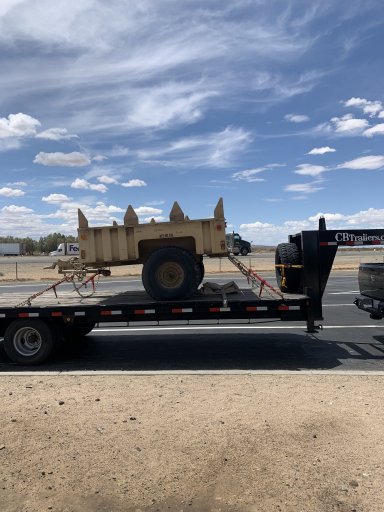
(Had to pull the tarp kit off as it was absolutely killing the fuel economy)
Coming Up Next...The Build
The Story
I have always been an outdoors person, having spent a lot of my youth helping on the family cattle ranch, parts of which are completely surrounded by tens of thousands of acres of National Forest. Anything out in nature appealed to me, from backpacking, to snowboarding, camping, hunting, scuba diving, flying, motorcycles, and pretty much everything in between. Motorcycling was always near the top of the list though, and I don't think there has been a single day in the last 25+ years I have not owned at least one.
After watching The Long Way Round and (to a lesser extent) The Long Way Down, I got the bug to get into Adventure Motorcycling/Touring. What better way to get out and experience new and exciting (and sometimes old and familiar) places, than to be on a motorcycle. To be out in the elements, feel the cold, the warm, sun, and the rain. To smell the area you are in, and experience the change from one place to another. It was fascinating, exciting, and liberating.
I had the pleasure to take a couple of trips by myself, and then met a beautiful woman who is intelligent, interesting, and interested (which I find equally important), and who also happens to love the outdoors. She had never been on a motorcycle before we met, but that didn't last very long (our second date was a motorcycle ride out to the coast to watch the sun set). A couple months later and we took a weekend long trip from the San Francisco Bay Area, out to Tahoe, up to the Mt. Lassen area, back out to the west side of the state, and (almost) made it back home without any issues (a flat tire a few hours from home found us on the side of the highway waiting for a ride from family.)



Fast forward a little while and we find ourselves living together and adopting a dog from a couple very good friends who were moving and couldn't take the dog with them (there was never any question where the dog would go if they weren't able to keep him, and it had been discussed long before the situation ever arose.) Well, it's a bit harder to add a 95lb black lab to an already full adventure motorcycle, so it was decided we should get a roof top tent for her Subaru, and I could build a rack for my Ram 2500 that could also carry it.
We took a couple of trips with the tent on my truck and it worked out great (so great we have never used the tent on the Subaru.) A few months later and what happens? We get another dog. Extended motorcycle trips are pretty much out of the questions now (but we can still get away for a good long ride now and then), and with the addition of the 2nd dog, a 45lb husky, we find the truck is packed to the gills with everything we want/need even for a long weekend. We were able to do a 2 week road trip up the eastern side of CA, OR, and WA, over into MT, down through ID, UT and NV (just clipped the corner AZ too), and back over to the family ranch outside of Bakersfield, CA. On this trip, we were cramped, to say the least, and even the dogs were having to share the back seat with supplies/personal items.




(This is a challenge photo - Find the deployed RTT)
I had seen some videos of people turning the M1101/2 into camping trailers, and thought it could be a fun project (and had been thinking of doing one before the long trip, but not actively trying very hard). Well, the long trip was a bit of a deciding factor, and I resolved to putting more effort into making it a reality. I scoured GovPlanet.com, Expedition.Supply, and any other sites I could find to learn as much as I could about the trailers, buying process, and prices. It just so happened that there was an auction for several M1102s in southern CA right at the end of our trip. I put bids in on the first couple, but they went for well more than I was prepared/willing to spend. Then, on the final one up for auction, I WON! And not at my highest bid either.
Unfortunately, this meant another 2 days in the truck only a week after getting back from being in it, pretty much all day, for the previous 2 weeks. So, on my next "weekend" (I was in Law Enforcement at the time and worked most traditional weekends, which was actually in my benefit at this time) I hooked up our gooseneck trailer, and drove 8 hours to the outskirts of Barstow, CA. The next morning, I drove out to the auction yard and picked up my new (to me) M1102 trailer. It was actually in better shape than I had anticipated, even though I had thoroughly scoured the photos before bidding. Once I was all loaded up and tied down, it was time to get back on the highway for another 8 hours for the drive home.




(Had to pull the tarp kit off as it was absolutely killing the fuel economy)
Coming Up Next...The Build


